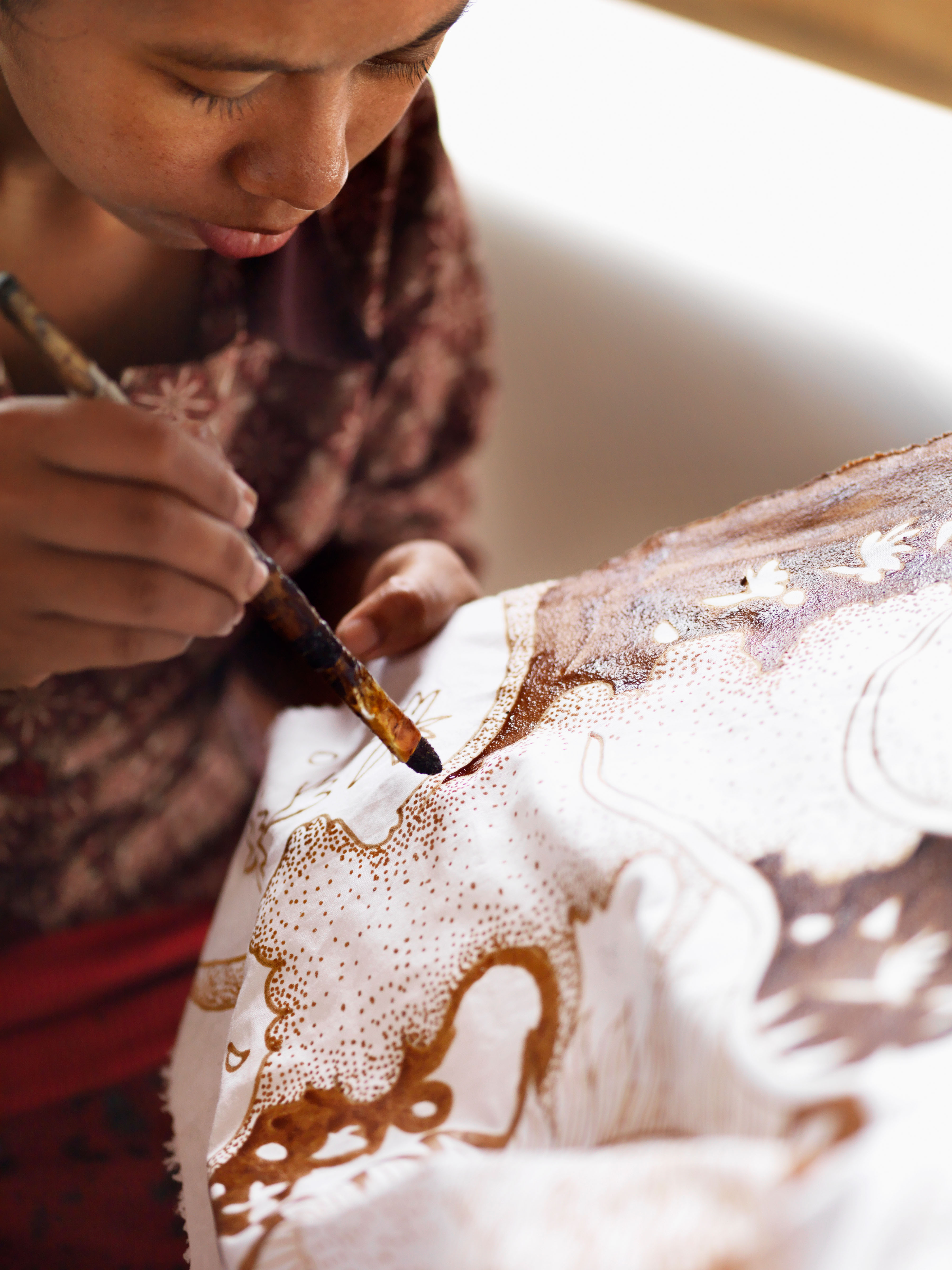Batik, << buh TEEK or BAT ihk, >> is a method of applying colored designs to fabric. The word and the method come from Indonesia. A design is made on the fabric, and those sections which are not to be dyed are covered with a substance that will not absorb the dye. Liquid wax, paraffin, or rice paste is often used for this purpose. When the fabric is dipped into the dye, the covered parts resist the dye. After the cloth is dry, the wax can be removed by boiling the cloth.

Designs in two shades of one color can be made by covering dyed parts that are not to be deepened and dipping the cloth into the dye again. The process can be repeated as often as necessary to obtain new shades or to apply different colors. The pattern on the back of the cloth is less distinct than that on the front. Many batik designs show thin, irregular lines. This effect results when the wax chips or breaks, and dye penetrates the breaks. In Indonesia, the design is often determined by the use the cloth will have. It might be for a headscarf, a sash, a sarong, or a loincloth.
